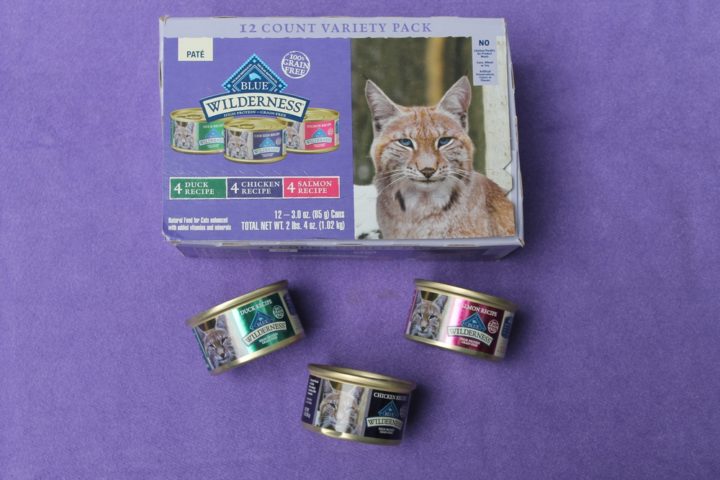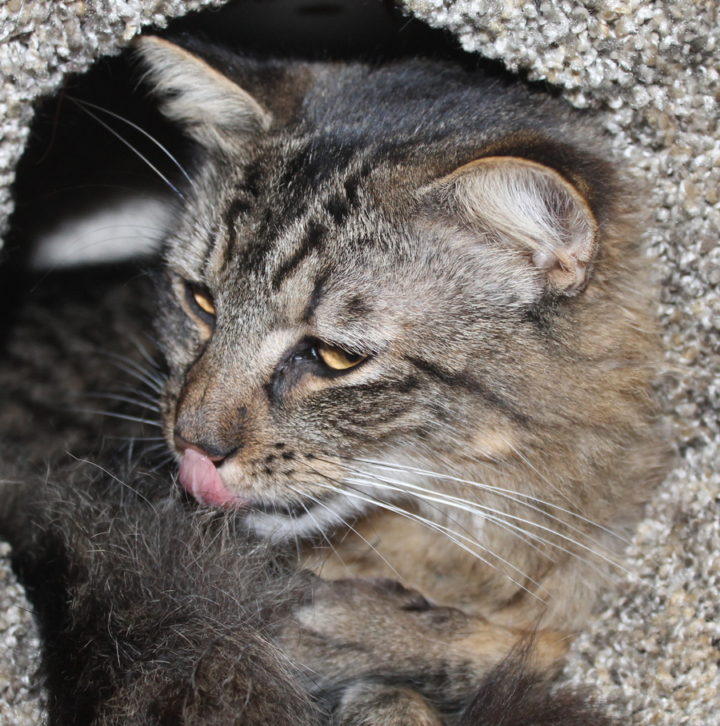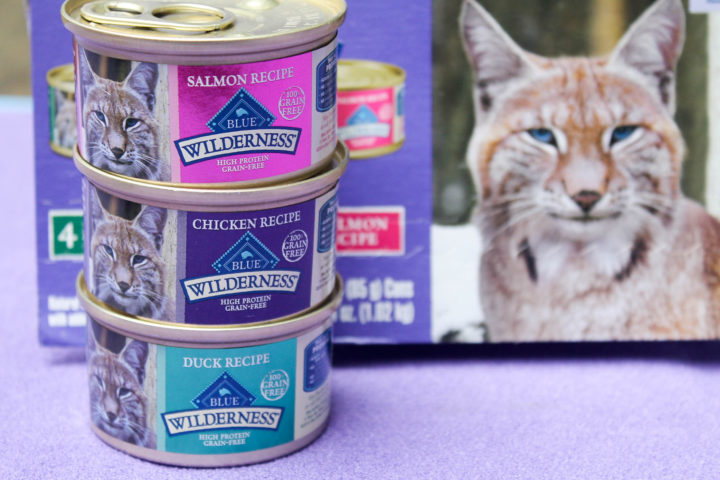A little under a decade ago, my cat Mally developed diabetes after getting a steroid shot for her allergies. She recovered within a few months (cats are one of the only animals that can go into remission), but during that time we learned a lot about the right diet for her. Up until then, our cats mostly ate dry food and only got wet food a few times a week as an extra treat. Turns out, for most cats, the other way around is actually the better way to go. I’ve mentioned in passing that our cats mostly eat canned food (and why), but I don’t think I ever really delved deeper into it. So let’s talk about the benefits of a canned cat food diet, then I’ll share one of my favorite brands!
Benefits of a mostly canned food diet for cats
* I received the Blue Buffalo Wilderness cat food mentioned below as a Chewy Influencer. All opinions are my own.
First, let me say that not all of my cats eat a canned-only diet. It took a long time for me to get Willow to even look twice at canned food, and Zoe will eat it but prefers her dry food. If your cat just plain doesn’t like wet, it’s even more important to make sure you’re giving them the highest-quality grain-free dry food.I also recommend trying different types of canned food, even a cat that turns their nose up at everything is bound to like at least ONE brand. Zoe and Willow, for example, both love Blue Buffalo Wilderness Duck Recipe and Chicken Recipe. They’re not too into the salmon, but that’s okay because Alex eats everything under the sun and Mally is pretty good about eating most types of wet food. Okay, on to the benefits.
Wet food prevents dehydration
Did you know that cats get the majority of their water from their diet? While they’ll definitely grab a drink from the water bowl (or in Zoe’s case, straight from the faucet), they won’t drink enough to meet their needs. Depending on the source, a 10-lb cat should drink one cup of water each day (some sources say 1/2 cup, but let’s err on the side of caution). Now, I know my cats aren’t drinking that much out of their water bowls. Cats on a dry-only diet have to work harder to get their daily requirement.
Being adequately hydrated leads to other positive health benefits. You’ll see shinier fur and healthier skin, for example. Shiny skin and supple fur doesn’t just make for a pretty kitty, it’s also more comfortable for them. Dry skin can lead to itchiness, allergies, and other not-so-fun issues.
Lower carbs
Not only are cats on dry-only diets more prone to diabetes and obesity, if your cat DOES happen to get diabetes, you pretty much have to get rid of the dry food entirely. There’s a reason for this. Most dry foods are loaded with carbs. While carbs have a bad rep for everyone from humans to dogs, it’s actually very much deserved when it comes to cats, especially those with diabetes. Do you know how many carbohydrates your cat actually needs? Zero. That’s right. Zilch, zip, none. Does that mean that a few carbs will hurt them? No, of course not. In the wild, carbs make up about 5% of their diet. Not because they’re actively looking to eat carb-laden critters, but because it just worked out that way. Too many cheap cat foods rely primarily on carbs to fill the bag…and your cat.
How to choose the right canned food for your cats
Of course, not all canned cat foods are equal. While the majority of them are, for all intents and purposes, nutritionally complete, some canned cat foods are loaded with bad stuff, too. When it comes to picking out the best, the name of the food is often an indicator. For example, the name “Blue Buffalo Wilderness Duck Recipe” basically says “duck plays a huge role in making up this recipe.” Since the word duck comes before a modifier, it needs to contain at least 25% of the meat. If, on the other hand, a food is called “Generic Cat Food with Duck,” that means that the duck only needs to make up a tiny portion to meet the label claim. After all, you could serve a huge plate of spaghetti, sprinkle a little parm cheese on it, and call it “Spaghetti with Parmesan Cheese.” You can learn more about this at CatFoodGuide.com. They explain it a lot better than I can.
The first ingredient will also be a huge clue. In the Blue example, duck comes first on the label, followed by two other good meat sources (meat-based broth and chicken). On the other hand, a glance at a substandard wet food shows some sort of “by-product” as the first ingredient. That can mean quite a few things. It could be the parts of a chicken that, while theoretically fit for human consumption just weren’t up to par. Or it could be the skin, fat, organs, and random other bits that we usually throw away. Not all by-products are bad, but given the choice between a clear meat source and a dubious one, I like to go with the one that simply says “duck,” “chicken,” etc.
We actually rotate between a few brands. Blue Wilderness is definitely staying in rotation. All of my cats really liked it, but Zoe and Willow actually loved it. We are long-time fans of Blue in general. In fact, their dry cat foods are among one of our top 4 choices (we rotate those, too).
Bottom line, while you CAN feed your cat an all-dry diet, I feel (and research agrees) that a primarily wet-food diet is better. That doesn’t mean you should completely ditch dry. We still keep a bowl filled with high-quality kibble out for my cats. Key word being high-quality. I’ve worked with several amazing cat food brands over the years, so just look around if you need some ideas.
You’ll find Blue Wilderness canned cat food at Chewy.com, one of my all-time favorite places to shop for pet products. If you’re a first-time customer, you can get 20% when you sign up for autoship (which you can cancel at any time without jumping through crazy hoops).
Do you feed your cats canned, dry, or both? Share your reasons below!






This is good information. I haven’t had a cat in ages, we did always give them canned food. I will keep this in mind if I ever do have a kitty again!
Both of my cats love moist canned food, but one of them has a very sensitive stomach, so I can only give him very little everyday and I keep dry food out for him all of the time